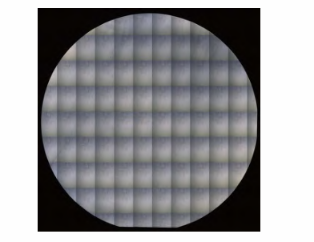The main methods for silicon single crystal preparation include: Physical Vapor Transport (PVT), Top-Seeded Solution Growth (TSSG), and High-Temperature Chemical Vapor Deposition (HT-CVD). Among these, the PVT method is widely adopted in industrial production due to its simple equipment, ease of control, and low equipment and operational costs.
Key Technical Points for PVT Growth of Silicon Carbide Crystals
When growing silicon carbide crystals using the Physical Vapor Transport (PVT) method, the following technical aspects must be considered:
- Purity of Graphite Materials in the Growth Chamber: The impurity content in graphite components must be below 5×10⁻⁶, while the impurity content in insulation felt must be below 10×10⁻⁶. Elements such as B and Al should be kept below 0.1×10⁻⁶.
- Correct Seed Crystal Polarity Selection: Empirical studies show that the C (0001) face is suitable for growing 4H-SiC crystals, while the Si (0001) face is used for growing 6H-SiC crystals.
- Use of Off-Axis Seed Crystals: Off-axis seed crystals can alter the symmetry of crystal growth, reducing defects in the crystal.
- High-Quality Seed Crystal Bonding Process.
- Maintaining Stability of the Crystal Growth Interface During the Growth Cycle.
Key Technologies for Silicon Carbide Crystal Growth
- Doping Technology for Silicon Carbide Powder
Doping the silicon carbide powder with an appropriate amount of Ce can stabilize the growth of 4H-SiC single crystals. Practical results show that Ce doping can:
- Increase the growth rate of silicon carbide crystals.
- Control the orientation of crystal growth, making it more uniform and regular.
- Suppress impurity formation, reducing defects and facilitating the production of single-crystal and high-quality crystals.
- Inhibit backside corrosion of the crystal and improve single-crystal yield.
- Axial and Radial Temperature Gradient Control Technology
The axial temperature gradient primarily affects crystal growth type and efficiency. An excessively small temperature gradient can lead to polycrystalline formation and reduce growth rates. Proper axial and radial temperature gradients facilitate rapid SiC crystal growth while maintaining stable crystal quality. - Basal Plane Dislocation (BPD) Control Technology
BPD defects mainly arise when shear stress in the crystal exceeds the critical shear stress of SiC, activating slip systems. Since BPDs are perpendicular to the crystal growth direction, they primarily form during crystal growth and cooling. - Vapor Phase Composition Ratio Adjustment Technology
Increasing the carbon-to-silicon ratio in the growth environment is an effective measure to stabilize single-crystal growth. A higher carbon-to-silicon ratio reduces large step bunching, preserves seed crystal surface growth information, and suppresses polytype formation. - Low-Stress Control Technology
Stress during crystal growth can cause bending of crystal planes, leading to poor crystal quality or even cracking. High stress also increases basal plane dislocations, which can adversely affect epitaxial layer quality and device performance.
6-inch SiC wafer scanning image
Methods to Reduce Stress in Crystals:
- Adjust the temperature field distribution and process parameters to enable near-equilibrium growth of SiC single crystals.
- Optimize the crucible structure to allow free crystal growth with minimal constraints.
- Modify seed crystal fixation techniques to reduce thermal expansion mismatch between the seed crystal and graphite holder. A common approach is to leave a 2 mm gap between the seed crystal and graphite holder.
- Improve annealing processes by implementing in-situ furnace annealing, adjusting annealing temperature and duration to fully release internal stress.
Future Trends in Silicon Carbide Crystal Growth Technology
Looking ahead, high-quality SiC single crystal preparation technology will develop in the following directions:
- Large-Scale Growth
The diameter of silicon carbide single crystals has evolved from a few millimeters to 6-inch, 8-inch, and even larger 12-inch sizes. Large-diameter SiC crystals improve production efficiency, reduce costs, and meet the demands of high-power devices. - High-Quality Growth
High-quality SiC single crystals are essential for high-performance devices. Although significant progress has been made, defects such as micropipes, dislocations, and impurities still exist, affecting device performance and reliability. - Cost Reduction
The high cost of SiC crystal preparation limits its application in certain fields. Optimizing growth processes, improving production efficiency, and reducing raw material costs can help lower production expenses. - Intelligent Growth
With advancements in AI and big data, SiC crystal growth technology will increasingly adopt intelligent solutions. Real-time monitoring and control using sensors and automated systems will enhance process stability and controllability. Additionally, big data analytics can optimize growth parameters, improving crystal quality and production efficiency.
High-quality silicon carbide single crystal preparation technology is a key focus in semiconductor material research. As technology advances, SiC crystal growth techniques will continue to evolve, providing a solid foundation for applications in high-temperature, high-frequency, and high-power fields.
Post time: Jul-25-2025

